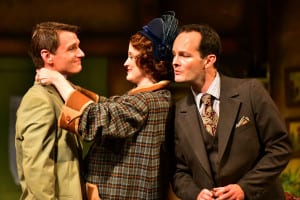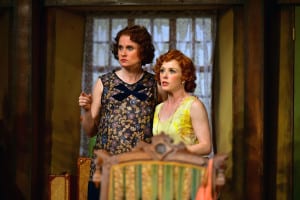Summertime usually means barbeques, sunbathing, sleeping in and packing in as much fun as possible before the beginning of another academic year. But one thing is missing from that list — reading — and it’s at the top of the list for youth departments in local libraries that encourage kids to pig out on books before going back to school in the fall.
And what better way to encourage kids to read than with superheroes? Local Long Island libraries’ summer reading lists for kids and young adults bring superheroes to the foreground with their series of hero-related books for elementary school to high school children.
Brian Debus, head of the Children’s Department at Emma S. Clark Memorial Library in Setauket, said the younger kids favored these graphic novel superhero books the most. Of the nearly 70,000 books in the Children’s Department, the aisles for these books and books for beginner readers are nearly barren, according to Debus.
“By the middle of the summer at least all of them have been checked out at least once,” Debus said. Children receive weekly prizes after reading the books they log out. Although the theme is superheroes, kids can log out other books as well. According to Debus, from June 22 to July 10, children had logged out 3,674 books.
Fantasy books aren’t only flying off the shelves at Emma Clark Memorial Library. According to Katherine “Kathy” Kalin, department head of Young Adult Services at North Shore Public Library, science fiction and fantasy books are a hit among elementary, middle and high school youths.
The library’s Battle of the Books program is one of its summer reading programs for sixth- to eighth-grade students. But ninth- to 12th-grade students who aged out of this program can still keep up with their summer reading in the Battle Bistro summer reading program at the North Shore Public Library.
Battle Bistro participants read three books: “Half Brother” by Kenneth Oppel, “The Kiss of Deception” by Mary E. Pearson and “The Rules of Survival” by Nancy Werlin. According to Kalin, who has read all the books for both reading programs, teens across Long Island and the country can also register for an online reading club, Unmask!, which allows them to “unmask the superhero in you.”
Unmask! club members are not limited to stories about Superman swooping in to save the day, as the hero in their story can be as simple as a strong female character.
“It’s things that kids can relate to in their lives.” Kalin said. Teens in this reading club must answer a question to show they read the book. According to Kalin, this year the question encourages kids to delve into the storyline and examine if they could relate the book to an experience in their lives.
Teens can register for this club and track their reading progress and receive a prize for every two hours of reading.
Huntington Public Library also rewards its reading club participants. Laura Giuliani, department head of Youth and Parent Services, said more students are using suggested reading lists provided by their schools.
Picture books are popular among preschoolers. “Wonder” by R. J. Palacio and “Thirteen Reasons Why” by Jay Asher are popular with teens and deal with ideas of self-acceptance and suicide, respectively.
While Giuliani doesn’t know why these two books are a hit among teens, she said it’s possible the kids reading these books can relate to the storyline in some way. But regardless of the genre of book or the types of prizes, these libraries want one thing: to encourage kids and adults alike to keep reading and avoid the summer slide.
“It maintains their reading skills throughout the summer so that they [don’t] … lose those skills that they learned,” Kalin said.
Giuliani agreed saying, “If kids don’t get any reading in, they kind of fall out of the loop. It keeps the reading comprehension … and vocabulary [up].”
Most importantly, reading is just a simple fun and relaxing way to get lost in a different reality before preparing for another school year.
































